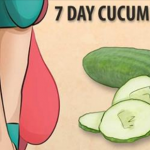Pictures Of Stomach After Eating Ramen Noodles Will Make You Never Eat Them Again
Ramen noodles include Tertiary-butyl hydroquinone (TBHQ), which is a by-product of the petroleum industry and the ingredients which are added in the food as preservatives. This ingredient is not digestible and it doesn’t provide you with any good at all.
An experiment was conducted by a gastrointestinal expert with a time lapse video inside the stomach. The purpose of this experiment was to compare the fresh and preserved ramen noodles. The results were astonishing after only 2 hours of digestion. This experiment was the first of its kind and it was conducted by Dr, Braden Kuo of Massachusetts General Hospital, and he wanted to reveal what happens in the stomach and the digestive tract when we eat ramen noodles.
The “smart pill” which in fact is a camera as big as multi-vitamin, has been used in this experiment, showing what happens in the gut when a person eats a package of instant ramen noodles compared to fresh. Dr. Kuo recorded 32 hours with his smart pill.
“What we can really notice here is that the stomach contracts back and forward as it is trying to triturate the ramen noodles,” Dr. Kuo explains at the beginning of the video. At the other hand, the study volunteers also consumed fresh, homemade ramen noodles on a different day. You will see an astonishing difference in the video at 20 minutes and 2 hours.
“The most astonishing thing about this experiment is when you look at the time interval, or with other words, the processed ramen noodles were less digested than the homemade ramen noodles,” said Dr. Kuo. This leaves impact on the nutrient absorption and could theoretically let preservatives to remain in the stomach cavity for longer period of time before being transferred into the intestines and eliminated afterwards.
What is TBHQ?
It is used in processed foods by sprinkling on the packaging or the food itself in order to prevent discoloration and changes in taste and aroma. It is added in order to maintain stability in products like perfumes, cosmetics, varnishes and lacquers.
Small levels of TBHQ will not kill you (although there are records about death) or make you ill at the same moment, but it can leave a long term impact on your overall heath like weakening of the organs and triggering the appearance of cancers and tumors.
According to FDA the TBHQ must not be over 0.02% of its oil and fat content. It was reported that death has caused by consuming 5 grams TBHQ. This is very high amount compared to the amounts included in foods, but it is a sign that this preservative is very dangerous for our health.
It has been proved that increased doses have negative impacts on the lab animals, like creating precursors to stomach tumors and harming the DNA. Many studies have proved that constant exposure to high amount of TBHQ is carcinogenic, particularly for stomach tumors.
Ingestion of only one gram can lead to puking, diarrhea, sickness, anaphylactic shock, ringing in the ears, delirium, lack of breath and collapse. Many people reported that digestion of TBHQ caused anxiety, nightmares and asthma, while others claim that they have experienced body rash and swollen lymph nodes.
TBHQ is included in McDonald’s chicken Mcnuggets across the whole territory of United States. But, the McDonald’s European Chicken Nuggets do not include any toxic preservative. The most interesting thing is that both the FDA and the European Food Safety Authority (EPSA) assessed TBHQ and decided that it is safe for the humans at the amounts allowed in foods. The TBHQ is considered as non-carcinogenic ingredient in Europe, so what is the reason why it is disallowed in Europe?
Other Food Products Including TBHQ:
- McDOnald’s chicken nuggets and French fries
- CHEEZ-IT Crackers by Kellogg’s
- Butterfinger chocolate and Reese’s Peanut butter cups
- Nestle Crunch
- Wheat Thins
- Microwave popcorns
- Pam cooking spray
- Aldi products
- Kelloggs Eggo frozen waffles and almost every other Kellogg product
- Taco bell beans and taco shells
- Keebler Cookies
- Red Barron frozen pizza
- Teddy Grahams
- Little Debbie
- TastyKake
- Different forms of soymilk
- Homestyle Peanut butter candies
- Kellogg’s Pop-Tarts
- Pet foods
- Crisco oi
- Various breads cereals and crackers
- Cosmetic products and baby products
- Some types of hair dyes lipsticks and eyeshades
- Wrigley’s gums
- KFC beans and fried chicken
- Little Debbies nutty bars and almost every M&M product
There are more processed foods which are not mentioned in the list which include TBHQ. Today more and more people are aware of the dangers and negative effects caused by processed foods. The regulatory agencies don’t do their job well and instead of eliminating these toxins from the foods, they assure us that they are completely safe.
HERE IS HOW YOUR STOMACH LOOKS LIKE WHEN DIGESTING THE RAMEN NOODLES:
The processed ramen (left) and homemade noodles (right) started off looking like this. The green-blue tint on the left is from the Gatorade.
Here is digestion after more than 2 hours.
Source: www.fhfn.org
Leave a Reply
You must be logged in to post a comment.







